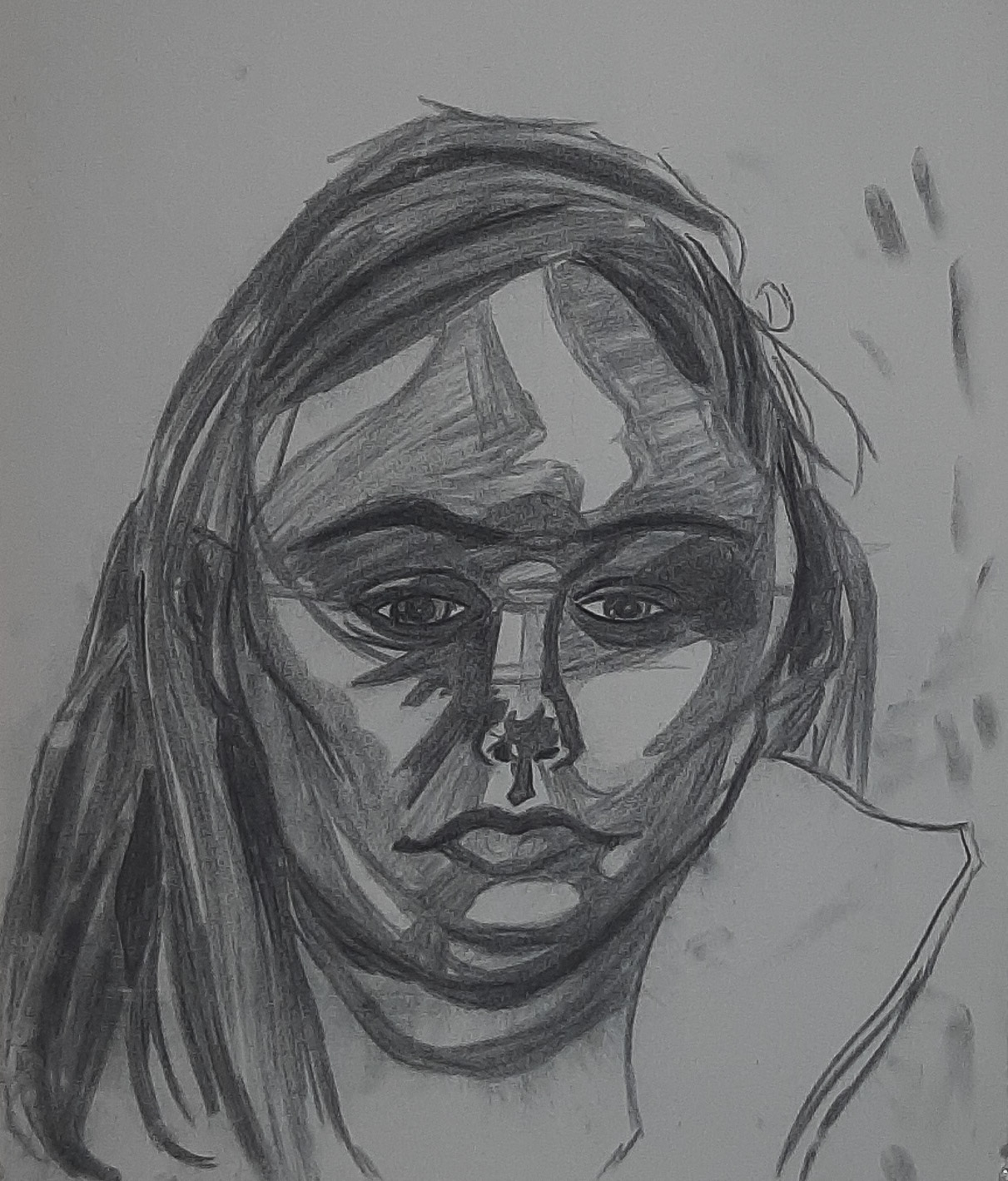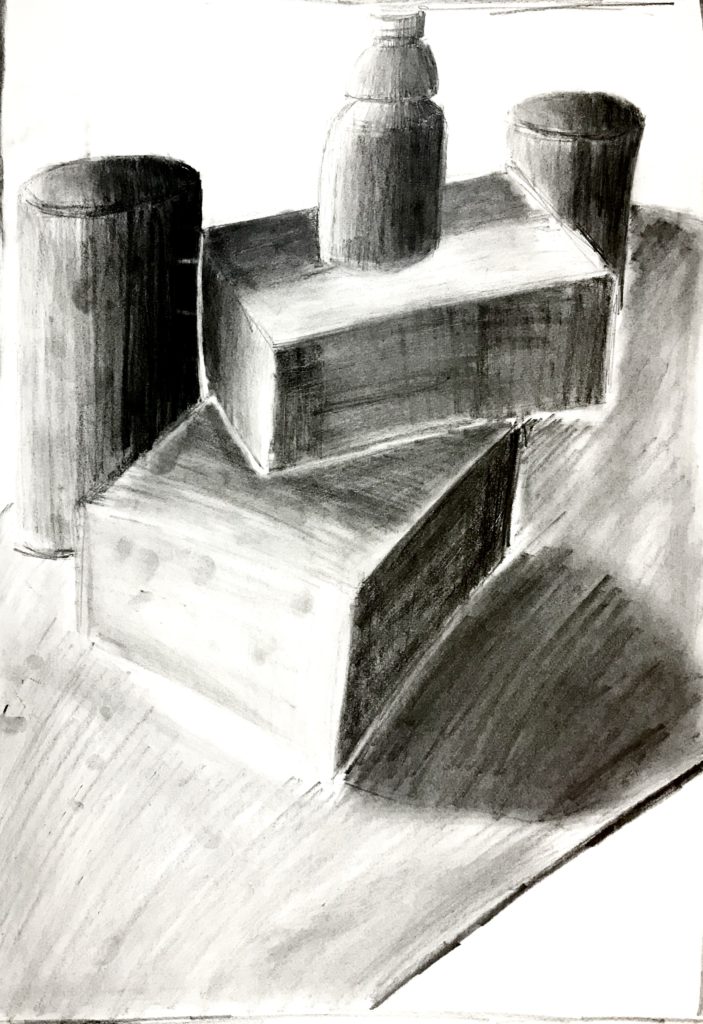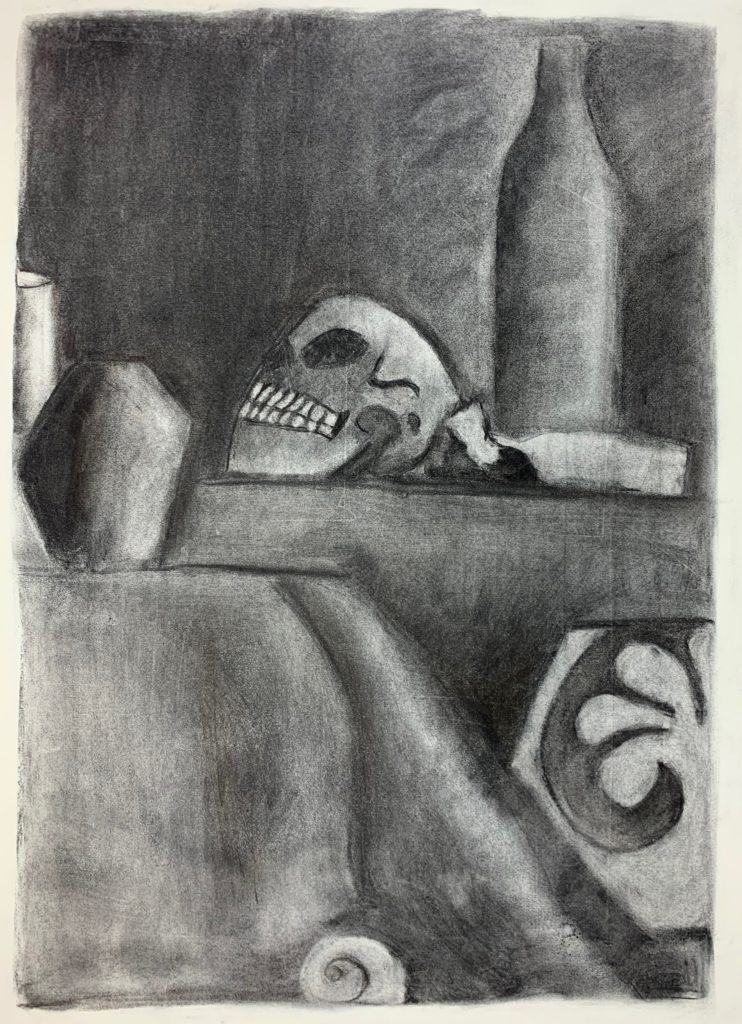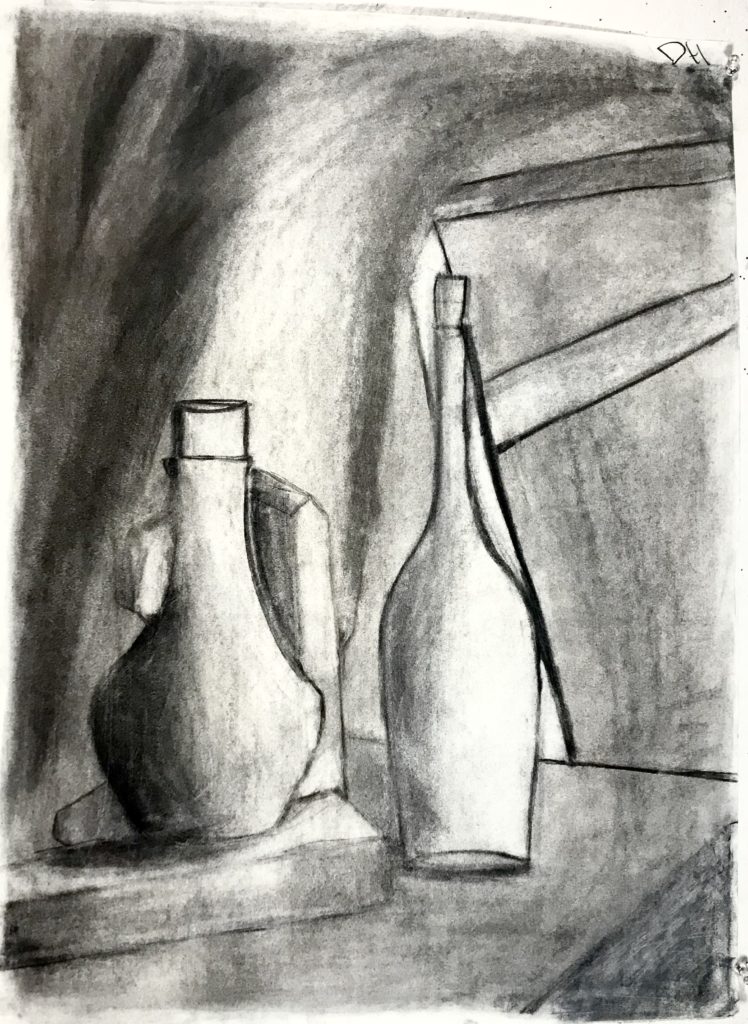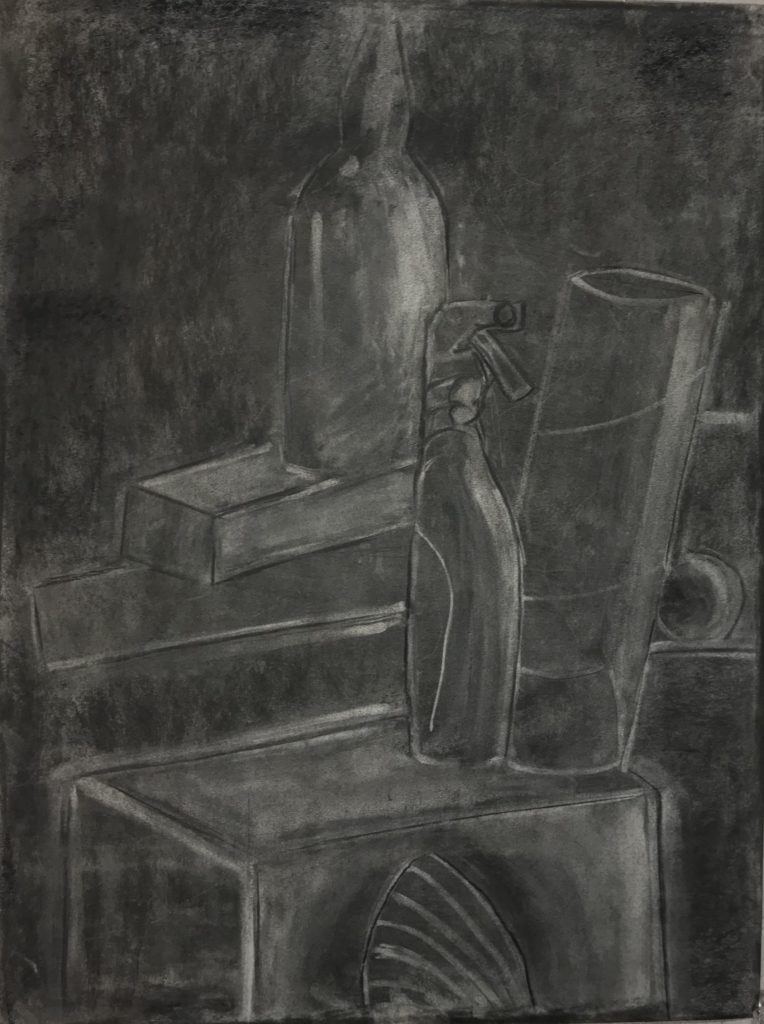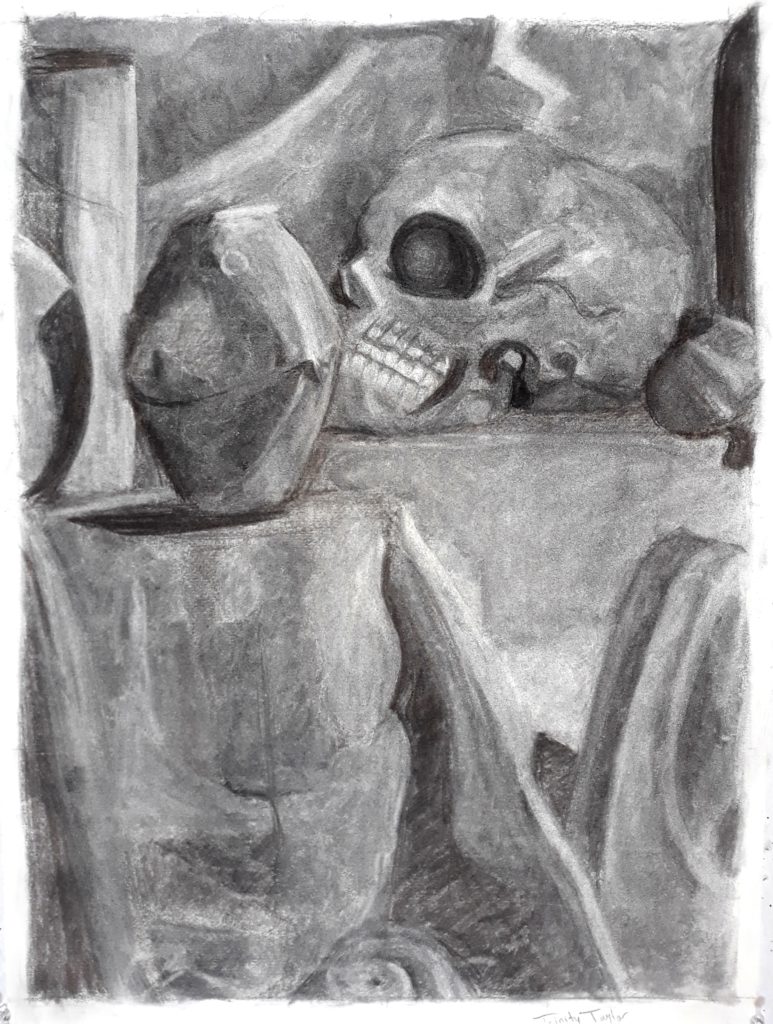
To draw this still life, I first covered my page in vine charcoal, then began drawing in any shapes I saw in a darker tone than the background.
Afterward, I used a kneaded eraser to lighten parts of the drawing with a lighter value, add highlights, and blend. I used the vine charcoal to darken spots with darker values create shadows. At first, the local values of all the objects were blending together, but after emphasizing a few parts of the drawing, most of the objects became distinct. Occasionally, I saw the need to use compressed charcoal to bring out darker parts of the still life where the vine charcoal wasn’t doing the job.



